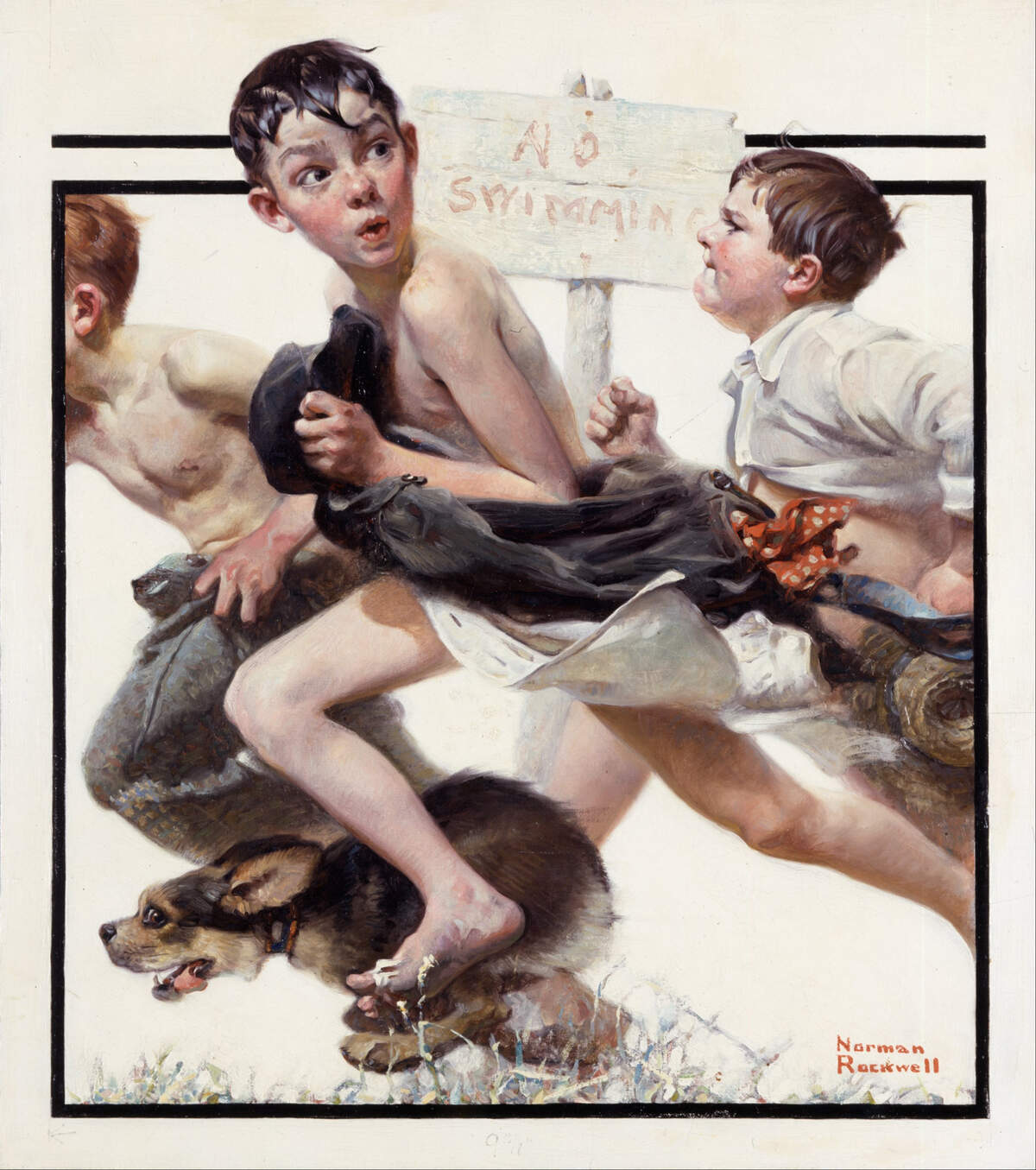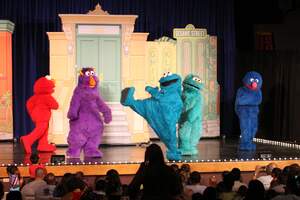

American Painters Day
A brush, some canvas, an easel, and some paint—these are just a few of the tools that painters use to perform their craft. There are painters all around the world, but on American Painters Day, we honor those from America. Although the holiday honors all American painters, there is a special emphasis on Norman Rockwell, who was born in New York City on today's date in 1894.
Rockwell began taking classes at The New School of Art at the age of 14. After dropping out of high school a few years later, he enrolled at the National Academy of Design. He soon transferred to the Art Students League of New York. After graduating, he started working as an illustrator for Boys Life magazine.
Rockwell depicted American life and Americana, which made him a quintessential American painter. He is best known for the covers he created for The Saturday Evening Post. He painted his first cover for the Post in 1916, at the age of 22, shortly after he had married his first wife, Irene O'Connor. He continued his work for them for 47 years, painting 321 covers. His paintings depicted small-town life and were composed of scenes that people all over the country could relate to. These simple scenes were often imbued with humor. He painted what he saw around him, albeit an idealized version of it. His paintings for the magazine—and his work in general—were widely embraced by the public, but not by most critics, who saw him as lacking artistic talent.
Although most of his early work—including the The Saturday Evening Post covers—is seen as avoiding the issues of the day, Rockwell did not always do so. Most notably, President Franklin Roosevelt's Four Freedoms speech, in which he laid out his four fundamental freedoms—freedom of speech, freedom of worship, freedom from want, and freedom from fear—inspired Rockwell to make paintings corresponding with those freedoms: Freedom of Speech, Freedom of Worship, Freedom from Want, and Freedom from Fear. Collectively, the paintings are known as Four Freedoms. They appeared in The Saturday Evening Post and became widely beloved. The original paintings toured the United States, raising $130 million for the war effort. Today they are regarded as four of his most important paintings.
In 1939, Rockwell moved to Arlington, Vermont, with his second wife, Mary, and his three sons. In 1953, the Rockwells made the move to Stockbridge, Massachusetts. After Mary passed away in 1959, Rockwell married Molly Punderson. She helped give him the courage to end his time working for the Post, and he soon started doing covers for Look magazine. It was at this time that he started focusing more on social issues, incorporating relevant topics into his work, such as race, poverty, and the Vietnam War. One of his most notable paintings of the era was The Problem We All Live With, which appeared within the pages of Look.
During Rockwell's final years, he created a trust and started the Norman Rockwell Museum. He was presented the Presidential Medal of Freedom by President Gerald Ford in 1977. Norman Rockwell passed away on November 8, 1978, at the age of 84.
Although American Painters Day is especially focused on Norman Rockwell, all other American painters are honored on it as well. Long before the United States became a country, painters were spread over its landscape. Native Americans were the first to leave their mark. When Spanish settlers arrived, they brought with them religious art.
During colonial times, painters emigrated from England. One was John Smibert, who came in 1728. Settling in Boston, he became a portrait painter and printseller. American artists of the late eighteenth and early nineteenth centuries mainly painted portraits. Some of these self-taught painters include John Brewster, Jr., William Jennys, Joseph Badger, and Charles Wilson Peale. They took their cues from British art, which they knew through early colonial painters like Smibert. Gilbert Stuart was another portrait painter from the times. He painted government officials after they took office, and his paintings were later used on postage stamps.
Some painters also painted landscapes, modeling their work after English painters. Patriotic art became popular during the American Revolution, and history painting was a large part of it. Some famous artists of the time who specialized in history painting include Benjamin West and John Singleton Copley. John Trumbell became known for painting large battle scenes of the Revolutionary War. Frontier painting was another favorite of the times.
In the early nineteenth century, a training infrastructure for painters started forming in the United States. The Hudson River School, which started circa 1820, was an art movement that formed the foundation of this infrastructure. Thomas Cole and other painters from the group influenced those who came after them. Robert S. Duncanson, one of the first important African American painters in the country, was also part of the Hudson River School.
History painting was far less popular in the nineteenth century, although Emanuel Leutze's Washington Crossing the Delaware is an exception to that generalization. Some prominent portrait painters of the time include Ammi Phillips, Thomas Sully, and G.P.A. Healy. John James Audubon, an early important naturalist in the country, documented birds; his The Birds of America is one of the most highly-regarded ornithological works. While Audubon focused on birds, George Catlin portrayed the West. Thomas Eakins was a realist painter of middle-class life, whose work contrasted the romanticism of many others. He wasn't highly regarded during his lifetime but has since become so.
American Impressionism was a popular style in the final decades of the nineteenth century, and American Realism, which used socially conscious imagery, took hold in the early years of the following century. Painters of this group included those known as the Ashcan School painters. Led by Robert Henri, the Ashcan School painters depicted the dirty fringes of city life in their work. After these painters came the modernists.
Following World War I, there again was a rise in realism, which depicted urban and rural scenes. Painters like Grant Wood, Reginald Marsh, Charles Sheeler, and Edward Hopper were within this fold. Other artists of the time focused on the Southwest landscape, Georgia O'Keeffe being one of the most prominent. Meanwhile, in Harlem, the Harlem Renaissance was an African American art movement that included writers and musicians, as well as painters.
During the Great Depression years, Franklin Roosevelt's New Deal put some painters to work, giving them jobs making public art. Three programs that were a part of this were the Public Works Art Project, the Federal Art Project, and the Works Progress Administration. The latter was the most well-known of the three. Other art movements continued to blossom during the Great Depression, including Regionalism and Social Realism. Some American painters of note from this era include Thomas Hart Benton and Grant Wood, who was previously mentioned.
Following World War II, New York City became the center of the art world, taking over the position that Paris had held. This was largely on account of the rise of abstract expressionism, the first American art movement that had an international impact, in which artists expressed emotions and feelings through abstract art, using spontaneity, instinct, and intuition. These painters were known for the use of large canvases and experimental paint application, including strong and unusual brushstrokes. Jackson Pollock and Mark Rothko were two early abstract expressionists.
During the following decades, as the twentieth century progressed, various movements spun off from or came in reaction to abstract expressionism, such as Neo-Dada, minimal art, and lyrical abstraction. A proliferation of other new art movements also came about, such as pop art, the Bay Area Figurative Movement, and Neo-expressionism. Some prominent pop artists were Andy Warhol and Roy Lichtenstein. American art and painting in the twenty-first century largely reflects Cultural pluralism: many things are happening at once, with no clear direction. Today we celebrate these modern American painters, as well as all those who came before them and put a special emphasis on Norman Rockwell, who was born on today's date.
How to Observe American Painters Day
Here are some ideas on how to spend the day:
- Learn about some of Norman Rockwell's most famous paintings.
- Visit the Norman Rockwell Museum.
- View the covers that Norman Rockwell painted for The Saturday Evening Post.
- Pick up a book that focuses on Norman Rockwell.
- Visit one of the country's most revered art museums, such as the National Gallery of Art or the The Art Institute of Chicago, or visit an art museum closer to home.
- View 50 of America's greatest paintings online.
- Read a book on the history of American painting.
- Watch some episodes of Bob Ross: The Joy of Painting.
- Learn more about some of the most renowned American painters:





















